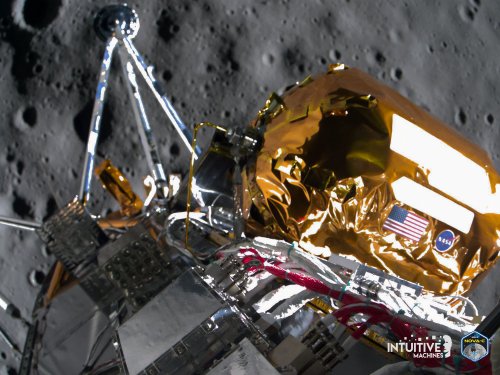A New Era in Space Exploration: Cryogenic Propellants Unlock New Capabilities
After spending seven days on the moon, Intuitive Machines’ first lunar lander, Odysseus, officially lost power today. This historic mission marked a significant milestone for space exploration, as it was the first time an American-built spacecraft had landed on the lunar surface since 1972.
The Odysseus Mission: A Breakthrough in Cryogenic Propulsion
The Odysseus lander, built by Intuitive Machines, made history not only by being the first privately built spacecraft to land on the moon but also for its innovative propulsion system. The VR900 engine, developed by IM and fueled with cryogenic liquid oxygen and liquid methane, demonstrated a more efficient and higher-energy propulsion method than traditional "space storable" or hypergolic propellants.
The Benefits of Cryogenic Propulsion
Cryogenic propellants offer several advantages over traditional fuels. They are more efficient, providing a higher specific impulse (a measure of a rocket engine’s efficiency) and a greater thrust-to-weight ratio. Additionally, cryogens are considerably less hazardous than hypergolic propellants, which are highly toxic.
However, cryogenic propellants come with unique challenges. Due to the need for active cooling to very low temperatures, they can only be stored prior to launch for a short period. To overcome this limitation, Intuitive Machines and SpaceX developed innovative fueling techniques, including wet dress rehearsals, to ensure a successful launch.
A Partnership Between Intuitive Machines and SpaceX
The partnership between Intuitive Machines and SpaceX was crucial in making the Odysseus mission a success. The two companies worked together to develop new capabilities for fueling the lander, modifying the launch pad and the second stage of the Falcon 9 rocket. This collaboration demonstrated the potential for private-public partnerships in space exploration.
The IM-1 Mission: A Catalyst for Cryogenic Use in Space
While the Odysseus mission was a groundbreaking achievement, it also highlighted the challenges associated with cryogenic propulsion. However, the experience gained during this mission will be invaluable for future space missions that plan to use cryogenic propellants.
In particular, NASA’s plans to utilize on-orbit depots for fueling spacecraft rely heavily on cryogenic propellants. The IM-1 mission provides a crucial stepping stone for these ambitious plans, demonstrating the feasibility of long-term storage and transportation of cryogenic fuels in space.
A New Era in Space Exploration
The Odysseus mission marks the beginning of a new era in space exploration, where innovative propulsion systems and private-public partnerships will play a key role. As we continue to push the boundaries of what is possible in space, we can expect even more exciting breakthroughs and achievements.
Sources:
- Intuitive Machines
- SpaceX
- NASA
Related Topics:
- IM-1 Mission
- Cryogenic Propulsion
- Private-Public Partnerships
- Space Exploration




